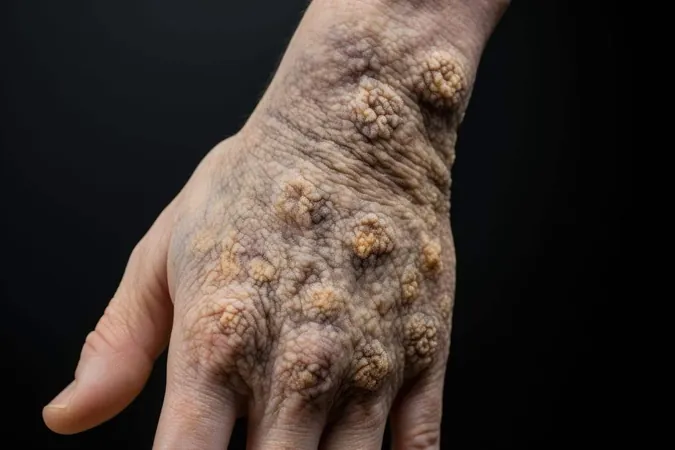
Breakthrough Discovery Paves the Way to Combat Skin Cancer Resistance!
2024-09-23
Introduction
In an exciting development for cancer treatment, researchers at UCLA have unveiled how squamous cell skin cancer cleverly evades treatment by exploiting fundamental metabolic pathways. This groundbreaking study reveals that a more effective strategy may involve targeting multiple metabolic routes at once, a shift that could revolutionize treatments for skin cancer and other malignancies with similar metabolic characteristics.
Research Overview
Led by esteemed UCLA professor William Lowry, the research was published in the prestigious journal Science Advances, capturing the attention of the medical community.
Previous Findings
Previously, in 2019, Lowry's team made significant strides when they discovered that when glucose is in short supply, squamous cell carcinoma cells can adapt by utilizing glutamine as an alternative energy source. This pivotal finding challenges the long-held assumption that cancer primarily depends on glucose for survival and growth.
Current Research Insights
The team’s latest findings indicate that solely targeting a single energy pathway is a futile endeavor—tumors can seamlessly switch to alternative nutrients if one pathway is blocked. In further experiments, it was confirmed that obstructing glutamine pathways forced tumors to tap into other energy sources, complicating treatment approaches.
The "Double Hammer" Strategy
Describing cancer cells as resembling a game of 'whack-a-mole,' researcher Galván noted that these cells quickly adapt to the loss of one nutrient source by switching to another. To combat this remarkable ability, the researchers implemented a 'double hammer' strategy, blocking both the glucose and glutamine pathways simultaneously. Remarkably, this approach successfully inhibited cancer growth in mice.
Mechanisms of Adaptation
An intriguing aspect of the research revealed that cancer cells adapt not by altering their genetic makeup but by swiftly translocating proteins to their surface, thereby enabling access to various nutrients. In light of these findings, Lowry and his team are focusing on transforming their discoveries into effective drug treatments that can simultaneously inhibit both glucose and glutamine pathways, as evidenced by their recent experiments.
Future Directions
In addition to systemic approaches, the researchers are also investigating the potential of topical treatments—such as gels or lotions—that could directly target skin cancer. This route may provide a safer alternative to traditional oral therapies and holds promise for treating other types of cancer that demonstrate similar metabolic behaviors, including melanoma.
Exploring Proteins and Mechanisms
Moreover, the research team is actively exploring how proteins and cellular mechanisms allow cancer cells to navigate metabolic changes. By decoding how these cells sense and respond to environmental stress, they aim to discover innovative strategies to prevent cancer cells from switching their energy sources, rather than simply blocking their nutrient access with drugs.
Conclusion
While these experimental drugs show great potential, it’s important to note that they have not yet been approved for human usage. The dawn of a new era in cancer treatment may be closer than ever, as scientists continue to unlock the secrets of cancer metabolism.
Stay Tuned
Stay tuned for more updates on this groundbreaking research, as the fight against cancer enters an exciting new phase!


 Brasil (PT)
Brasil (PT)
 Canada (EN)
Canada (EN)
 Chile (ES)
Chile (ES)
 España (ES)
España (ES)
 France (FR)
France (FR)
 Hong Kong (EN)
Hong Kong (EN)
 Italia (IT)
Italia (IT)
 日本 (JA)
日本 (JA)
 Magyarország (HU)
Magyarország (HU)
 Norge (NO)
Norge (NO)
 Polska (PL)
Polska (PL)
 Schweiz (DE)
Schweiz (DE)
 Singapore (EN)
Singapore (EN)
 Sverige (SV)
Sverige (SV)
 Suomi (FI)
Suomi (FI)
 Türkiye (TR)
Türkiye (TR)